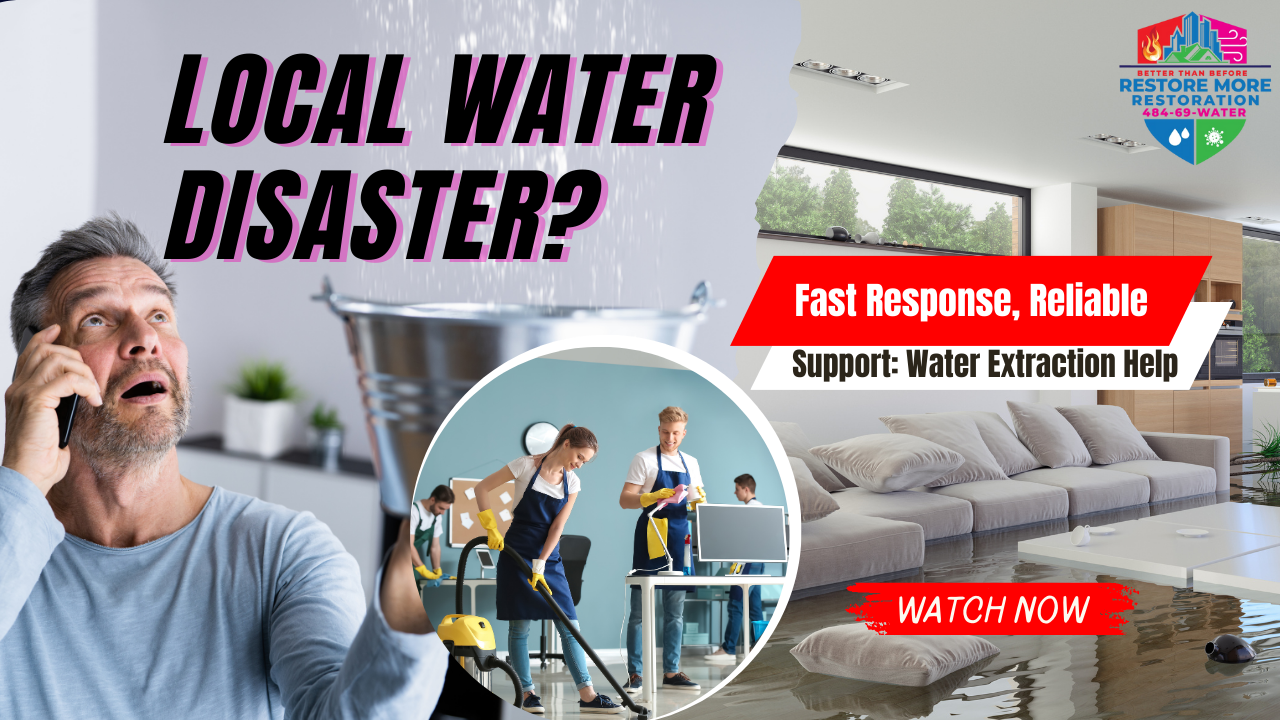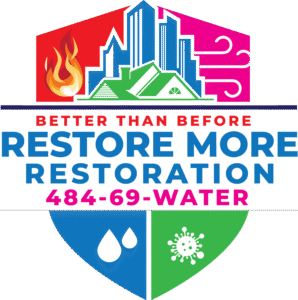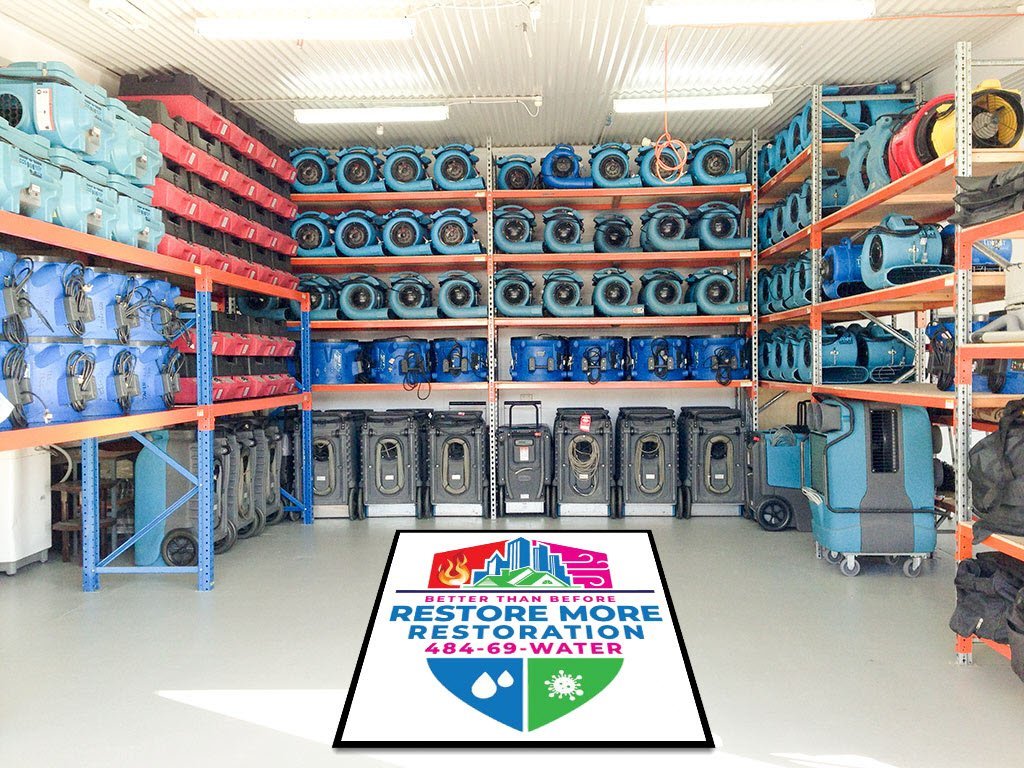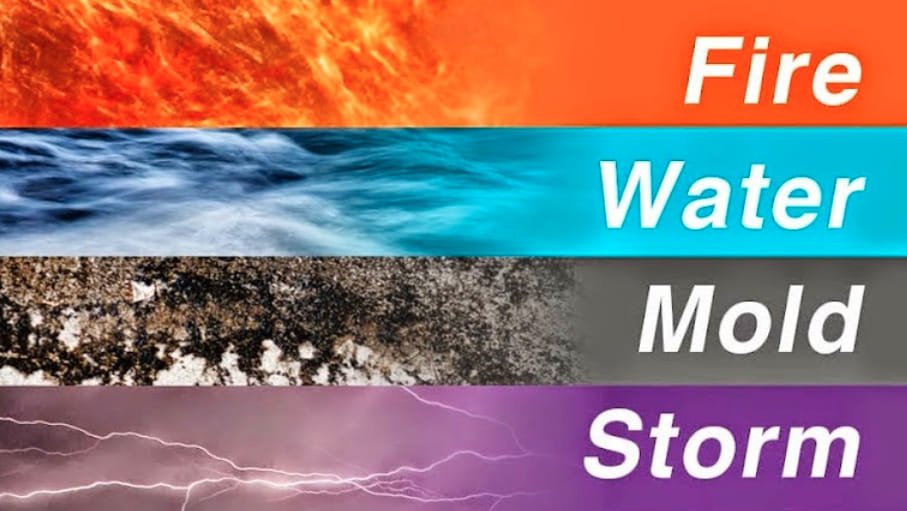Storm Damage Cleanup Services in Garnet Valley, Pennsylvania
Storm damage can strike Garnet Valley properties with devastating force and little warning, leaving homeowners and businesses facing complex restoration challenges that require immediate professional intervention. From severe thunderstorms with damaging winds and hail to winter storms with ice and snow accumulation, weather-related damage demands rapid response, specialized equipment, and comprehensive restoration approaches that address both visible damage and hidden problems that can develop over time. When severe weather affects your Garnet Valley property, you need storm damage cleanup professionals who understand the urgency of weather-related restoration and can provide the immediate response necessary to prevent additional damage and begin the recovery process.
At waterdamagecleanupgarnetvalleypa.com, we specialize in connecting Garnet Valley residents and businesses with expert storm damage cleanup services. Our trusted partner, [RestoreMore365](https://restoremore365.com/), provides 24/7 emergency storm damage response with specialized teams equipped to handle all types of weather-related damage, from wind and hail damage to storm-related flooding and everything in between. When severe weather strikes, professional help is available immediately to protect your property and begin the restoration process.
Understanding Storm Damage in Garnet Valley
Garnet Valley’s location in southeastern Pennsylvania exposes properties to various types of severe weather that can cause significant damage requiring professional restoration services. According to the [National Weather Service](https://en.wikipedia.org/wiki/National_Weather_Service), severe weather events are becoming more frequent and intense, making professional storm damage restoration increasingly important for property protection and recovery.
Types of Severe Weather Affecting Garnet Valley
**Severe Thunderstorms:**
Summer thunderstorms can produce damaging winds exceeding 60 mph, large hail, and heavy rainfall that can cause roof damage, siding damage, window breakage, and water intrusion. These storms often develop rapidly and can cause extensive damage in a short period.
**Winter Storms:**
Winter weather including heavy snow, ice storms, and freezing rain can cause roof collapses, ice dam formation, tree damage, and power outages that lead to secondary damage from frozen pipes and heating system failures.
**Tornadoes and Severe Wind Events:**
While less common, tornadoes and severe wind events can cause catastrophic damage including structural damage, roof removal, and debris impact that requires comprehensive restoration and reconstruction services.
**Flash Flooding:**
Heavy rainfall can cause flash flooding that affects basements, crawl spaces, and ground-level areas with contaminated water that requires specialized restoration approaches similar to other flood damage scenarios.
**Hail Storms:**
Large hail can cause significant damage to roofing materials, siding, windows, and vehicles, often creating entry points for water intrusion that may not be immediately apparent but can cause ongoing damage if not properly addressed.
Seasonal Storm Patterns in Garnet Valley
**Spring Storm Season:**
Spring brings severe thunderstorms with heavy rainfall, damaging winds, and hail that can cause roof damage, flooding, and tree-related damage as trees leaf out and become more susceptible to wind damage.
**Summer Severe Weather:**
Summer storms often feature intense rainfall, damaging winds, and large hail that can overwhelm drainage systems and cause significant property damage in short periods.
**Fall Transition Weather:**
Fall weather patterns can include severe storms as weather systems transition, often coinciding with leaf-covered gutters and drainage systems that may be more susceptible to overflow and water intrusion.
**Winter Weather Hazards:**
Winter storms bring unique challenges including ice dams, frozen pipes, heating system strain, and tree damage from ice and snow accumulation that can cause delayed damage discovery.
Types of Storm Damage Requiring Professional Cleanup
Storm damage encompasses various types of property damage that require different restoration approaches:
Roof and Structural Damage
**Wind Damage:**
High winds can remove shingles, damage flashing, and compromise roof integrity, creating immediate water intrusion risks that require emergency protection and comprehensive repair.
**Hail Damage:**
Hail impact can damage roofing materials, gutters, siding, and windows, often creating small openings that may not be immediately visible but can allow water intrusion over time.
**Tree Impact Damage:**
Falling trees and branches can cause severe structural damage including roof penetration, wall damage, and foundation impact that requires immediate emergency response and comprehensive restoration.
**Ice Dam Formation:**
Winter ice dams can cause water backup under roofing materials, leading to interior water damage that may not be discovered until significant damage has occurred.
Water Intrusion and Flooding
**Storm-Related Water Damage:**
Heavy rainfall can cause water intrusion through damaged roofs, overwhelmed gutters, and compromised building envelopes that requires immediate water extraction and drying services.
**Basement Flooding:**
Storm water can overwhelm drainage systems and cause basement flooding that requires specialized below-grade restoration techniques and contamination management.
**Wind-Driven Rain:**
Severe storms can drive rain through normally weather-resistant openings, causing interior water damage that requires comprehensive drying and restoration services.
**Flash Flood Damage:**
Rapid flooding from storm events can cause contaminated water intrusion that requires specialized flood restoration techniques and decontamination procedures.
Debris and Impact Damage
**Tree and Branch Debris:**
Storm debris including fallen trees, branches, and other materials can cause impact damage and create safety hazards that require immediate removal and damage assessment.
**Flying Debris Impact:**
Wind-blown debris can cause window breakage, siding damage, and other impact damage that creates immediate security and weather protection concerns.
**Roof Material Displacement:**
Storm winds can displace roofing materials, gutters, and other building components that require immediate recovery and reinstallation or replacement.
Secondary Damage from Power Outages
**Frozen Pipe Damage:**
Power outages during winter storms can cause heating system failures that lead to frozen pipes and subsequent water damage when systems are restored.
**Refrigeration Loss:**
Extended power outages can cause food spoilage and refrigeration system damage that requires cleanup and restoration services.
**Security System Failures:**
Power outages can compromise security systems, creating vulnerability to additional damage or loss during storm recovery periods.
RestoreMore365’s Storm Damage Cleanup Expertise
[RestoreMore365](https://restoremore365.com/) brings specialized expertise in storm damage cleanup that addresses the unique challenges of weather-related property damage:
Emergency Storm Response
**24/7 Storm Response:**
RestoreMore365 maintains 24/7 emergency response capability specifically for storm damage situations, with teams ready to respond immediately even during active weather events when conditions permit.
**Rapid Deployment:**
Specialized storm response teams can be deployed rapidly to affected areas with equipment and materials necessary for immediate emergency protection and damage mitigation.
**Weather Monitoring:**
Active weather monitoring allows the company to prepare for storm events and position resources for rapid response when severe weather threatens the Garnet Valley area.
**Multi-Property Coordination:**
Experience managing multiple storm damage projects simultaneously ensures that all affected properties receive appropriate attention and resources during widespread storm events.
Comprehensive Storm Damage Services
**Emergency Protection:**
Immediate emergency protection services including tarping, boarding, and temporary repairs that prevent additional damage while comprehensive restoration planning proceeds.
**Complete Damage Assessment:**
Thorough evaluation of all storm damage including obvious damage and hidden problems that may not be immediately apparent but could cause ongoing issues if not addressed.
**Insurance Coordination:**
Extensive experience with storm damage insurance claims ensures appropriate documentation and coordination with insurance companies for fair and efficient claim processing.
**Full Restoration Services:**
Complete restoration services from emergency protection through final reconstruction, eliminating the need for multiple contractors and ensuring coordinated restoration efforts.
Specialized Storm Equipment
**Emergency Protection Materials:**
Comprehensive inventory of tarps, plywood, and other emergency protection materials that can be deployed immediately to prevent additional damage.
**Debris Removal Equipment:**
Specialized equipment for safe and efficient removal of storm debris including fallen trees, damaged building materials, and other storm-related debris.
**Water Extraction Systems:**
Powerful water extraction equipment for addressing storm-related flooding and water intrusion that often accompanies severe weather events.
**Structural Drying Equipment:**
Advanced drying equipment designed for storm damage situations where water intrusion may affect large areas or multiple building systems simultaneously.
Storm Damage Cleanup Process
RestoreMore365’s storm damage cleanup process is designed to address the comprehensive challenges of weather-related property damage:
Emergency Response and Assessment
**Immediate Safety Evaluation:**
Comprehensive safety assessment addresses structural hazards, electrical dangers, debris hazards, and other safety concerns specific to storm damage situations.
**Damage Documentation:**
Detailed documentation of all storm damage including photographic evidence, damage mapping, and assessment of both obvious and potential hidden damage for insurance and restoration planning.
**Emergency Stabilization:**
Immediate stabilization measures including emergency tarping, boarding, debris removal, and temporary repairs to prevent additional damage during restoration planning.
**Restoration Planning:**
Development of comprehensive restoration plans that address all storm damage while coordinating with insurance companies and other stakeholders.
Emergency Protection and Mitigation
**Roof Protection:**
Emergency tarping and temporary roof repairs that provide immediate protection against additional water intrusion while permanent repairs are planned and executed.
**Structural Stabilization:**
Temporary structural support when storm damage affects load-bearing elements or compromises structural integrity.
**Security Protection:**
Boarding of damaged windows and doors to provide security protection and weather sealing while permanent repairs are completed.
**Utility Coordination:**
Coordination with utility companies for emergency shut-offs or service restoration when storm damage affects electrical, gas, or water services.
Debris Removal and Cleanup
**Safe Debris Removal:**
Professional removal of storm debris including fallen trees, damaged building materials, and other debris using appropriate equipment and safety procedures.
**Hazardous Material Management:**
Proper handling and disposal of hazardous materials that may be exposed or damaged during storm events, including asbestos, lead, and chemical storage.
**Site Cleanup:**
Comprehensive cleanup of storm-affected areas including removal of debris, damaged materials, and contaminated items that cannot be restored.
**Salvage Operations:**
Identification and protection of salvageable materials and belongings that can be restored rather than replaced.
Water Damage Restoration
**Storm Water Extraction:**
Rapid extraction of storm water from affected areas using appropriate equipment for different types of water intrusion and contamination levels.
**Structural Drying:**
Comprehensive drying of building materials and structural elements affected by storm-related water intrusion using advanced drying techniques and monitoring.
**Dehumidification:**
Industrial dehumidification systems that create optimal drying conditions and prevent secondary damage such as mold growth in storm-affected areas.
**Moisture Monitoring:**
Continuous monitoring of moisture levels throughout the drying process to ensure complete moisture removal and prevent ongoing problems.
Restoration and Reconstruction
**Structural Repairs:**
Comprehensive structural repairs addressing all storm damage including roof repairs, wall reconstruction, and foundation work as necessary.
**System Restoration:**
Restoration or replacement of building systems including electrical, plumbing, and HVAC systems that may have been damaged by storm events.
**Interior Restoration:**
Complete restoration of interior spaces affected by storm damage including flooring, walls, ceilings, and fixtures.
**Exterior Restoration:**
Restoration of exterior building elements including roofing, siding, windows, and landscaping affected by storm damage.
Specialized Storm Damage Scenarios
RestoreMore365 provides specialized services for different types of storm damage scenarios:
Tree Damage Restoration
**Emergency Tree Removal:**
Safe removal of fallen trees and large branches that pose immediate safety hazards or prevent access to damaged properties.
**Roof Penetration Repair:**
Specialized repair techniques for situations where trees have penetrated roofs, requiring both structural repair and comprehensive water damage restoration.
**Debris Impact Assessment:**
Thorough assessment of damage caused by tree debris impact, including hidden damage that may not be immediately apparent.
**Landscape Restoration:**
Coordination of landscape restoration services to address tree damage and restore property aesthetics and functionality.
Hail Damage Restoration
**Comprehensive Hail Assessment:**
Detailed evaluation of hail damage including roof damage, siding damage, window damage, and other impacts that may create water intrusion risks.
**Insurance Documentation:**
Specialized documentation techniques for hail damage that help ensure appropriate insurance coverage and claim processing.
**Preventive Repairs:**
Immediate repairs to prevent water intrusion through hail-damaged roofing and siding while comprehensive restoration is planned.
**System Protection:**
Protection of HVAC systems and other equipment that may have been damaged by hail impact.
Wind Damage Restoration
**Structural Assessment:**
Comprehensive evaluation of wind damage including structural integrity assessment and identification of compromised building elements.
**Emergency Stabilization:**
Immediate stabilization of wind-damaged structures to prevent additional damage and ensure safety during restoration work.
**Envelope Restoration:**
Restoration of building envelope integrity including roofing, siding, and window systems damaged by wind events.
**Debris Management:**
Efficient management of wind-blown debris including recovery of displaced building materials when possible.
Ice and Snow Damage
**Ice Dam Removal:**
Safe removal of ice dams and restoration of damage caused by ice backup under roofing materials.
**Snow Load Assessment:**
Evaluation of structural damage caused by excessive snow loads and implementation of appropriate structural repairs.




